On View
Praying for Success: In the Wake of Scandal, Can the Museum of the Bible Find Mass Appeal?
After settling with the Department of Justice over illicit artifacts, the man behind the Museum of the Bible hopes for redemption.
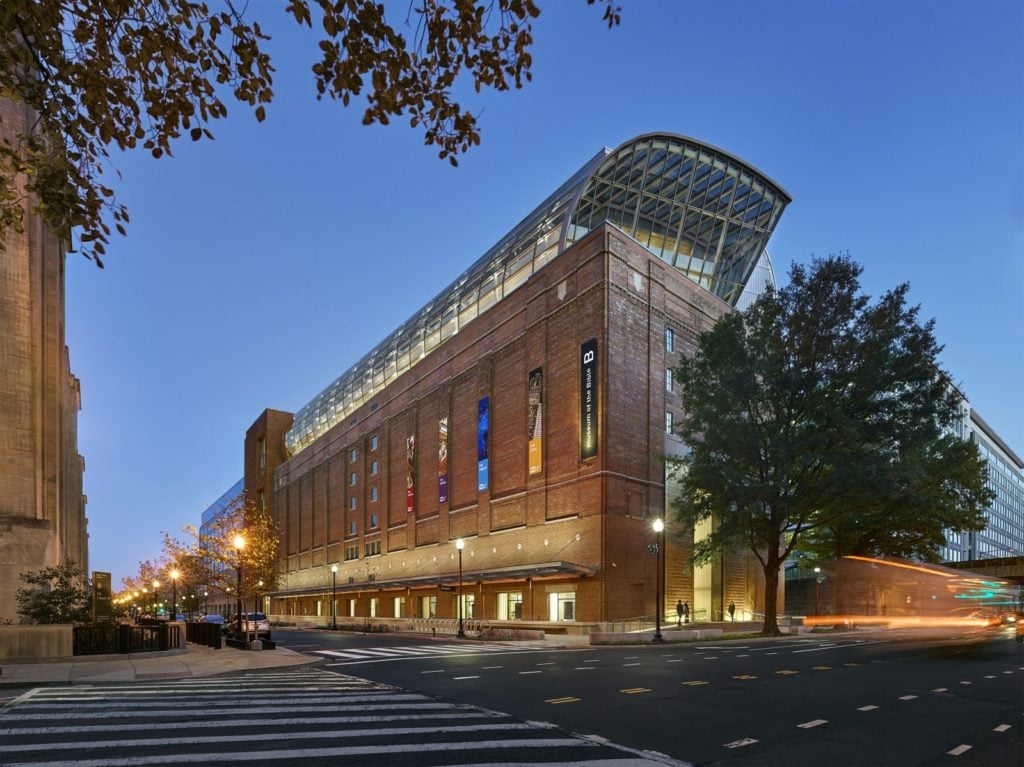
After settling with the Department of Justice over illicit artifacts, the man behind the Museum of the Bible hopes for redemption.

Menachem Wecker

Soon after the Meadows Museum opened its doors in Dallas in 1967, 44 of the works in its collection were exposed as forgeries. The paintings—donated by oilman Algur H. Meadows—included works purporting to be by Bonnard, Chagall, Degas, Modigliani, and Picasso.
The news was splashed across the newspapers, leaving Meadows humiliated. But he continued to buy big-ticket works, the New York Times reported at the time, acting like “a nearly drowned swimmer rushing back into the water before he loses his nerve.”
Forty years later, as another institution—the Museum of the Bible in Washington, DC—opens on the heels of an embarrassing public scandal, it feels like déjà vu.
Last July, the arts and crafts chain Hobby Lobby settled with federal prosecutors and agreed to return 5,500 smuggled Iraqi artifacts and pay a $3 million fine. (Hobby Lobby’s president Steve Green, who is also the founder and board chairman of the Museum of the Bible, said the company was new to the field and relied on the wrong people for information.)
Although Hobby Lobby insists the illicit artifacts were not destined for the museum, many suspected the imbroglio—as well as questions about the missionary intensions of its evangelical leadership—would cast a shadow over the institution.
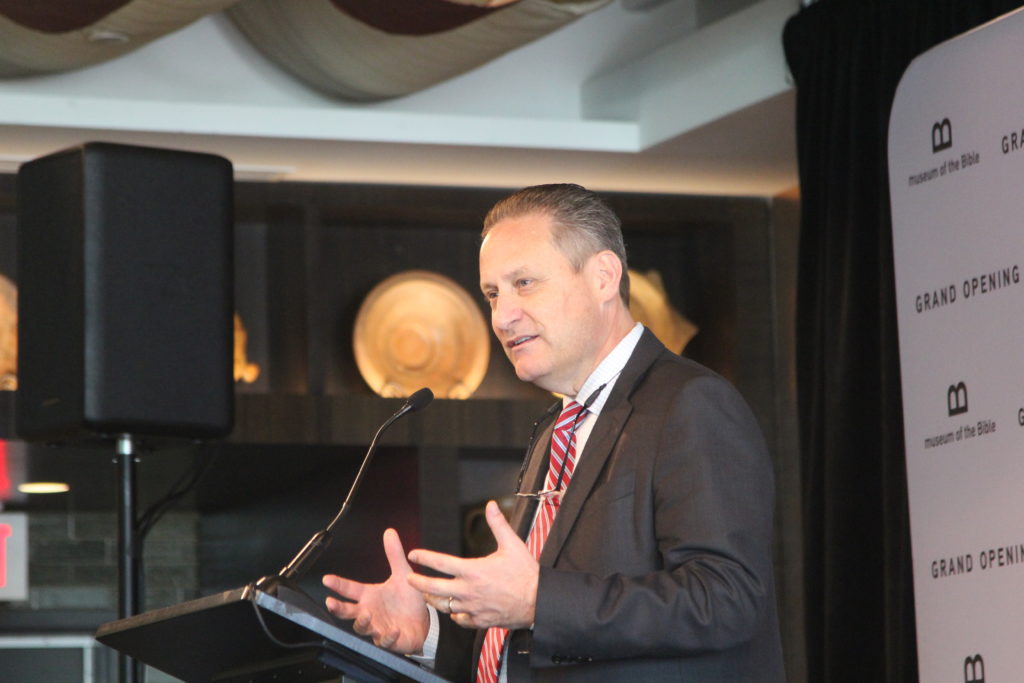
Hobby Lobby’s Steve Green, Director of the new museum. Photo: Menachem Wecker.
Statements made following the Meadows scandal by Ralph F. Colin, then Art Dealers Association general counsel and vice president, in 1967 still ring true. “If he bought them for under half a million, he should have known they were fakes,” Colin told the Times. “This whole situation points up my advice to collectors. One: never buy bargains. Two: deal only with responsible dealers.”
The jury may still be out whether the DC museum, which opens to the public today, can turn its reputation around as the Meadows Museum eventually did. But after a thorough look around, it is clear that the biblically-proportioned, 430,000-square-foot museum—which cost more than $500 million and sits two blocks south of the National Air and Space Museum—isn’t hawking theology. At least, not to everyone.
“We are free to quote scripture and to tell its story and all that, but we obviously have our limits, not necessarily espousing faith,” Green, Hobby Lobby’s president, told artnet News in an interview. Asked if the museum is able to frame works differently than a secular museum can, Green said, “Yes. Because we are overt about the Bible.”
After passing under a 140-foot-long screen on the ceiling of the entry hall, upon which the Sistine Chapel frescoes and a variety of other patterns are variously projected, visitors approach a central staircase, intended to evoke a stairway to heaven.
To the right, a children’s gallery contains games like skee ball, designed with biblical themes such as Queen Esther and Daniel in the lions’ den. On the floor, a projected pond encourages kids to “walk on water,” as Peter did in faith following Jesus’ example. (On a recent visit, however, a young boy seemed less interested in miracles than stomping on projected fish.)
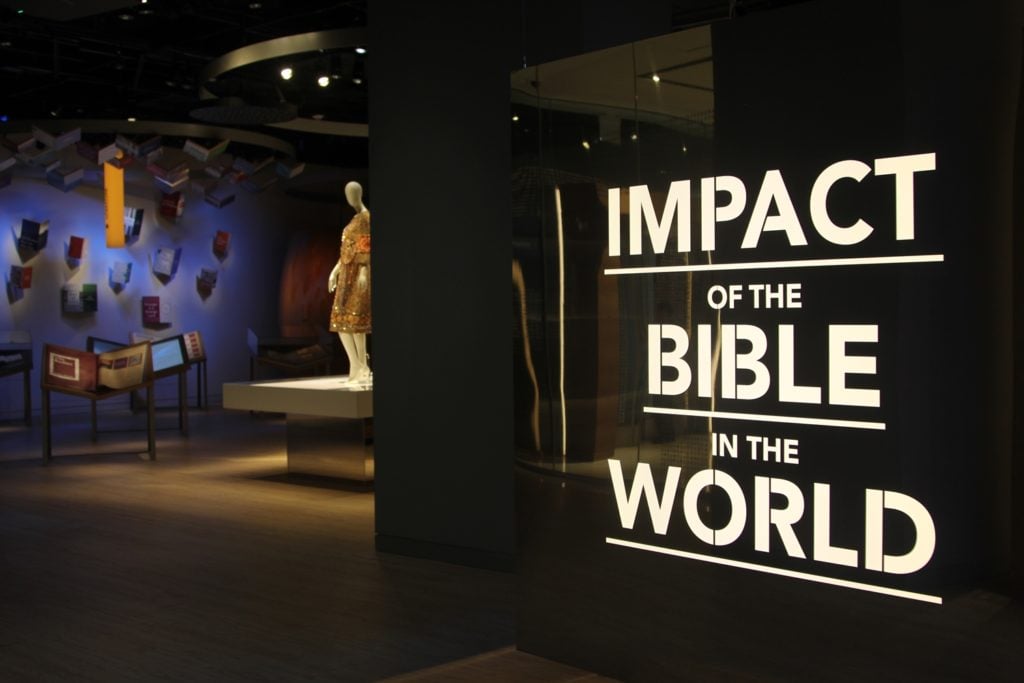
Interior of the Museum of the Bible. Photo: Menachem Wecker.
As visitors explore three central exhibitions—which cover the history, narrative, and impact of the Bible—spread across eight floors, they’ll find the displays counter some of the misconceptions that many may bring to the museum.
A vitrine on women and the Bible, for example, discusses the women’s rights movement. And a nearby wall label acknowledges that some justified slavery in the US by citing biblical chapter and verse.
A display case on science and the Bible explores the 1925 Scopes trial, in which a Tennessee teacher was accused of violating the law by teaching evolution. In contrast, the Museum of the Bible credits Darwin’s evolutionary theory with being “pivotal in the development of modern biology and science.” The tone is more apology than apologetics.
Some moments border on cheesy; others are strikingly sober. An immersive section devoted to the Nazareth of Jesus’ day feels Disney- or Vegas-like (although it was also among the most crowded), while a floor devoted to the history of the Bible recalls a monastic library.
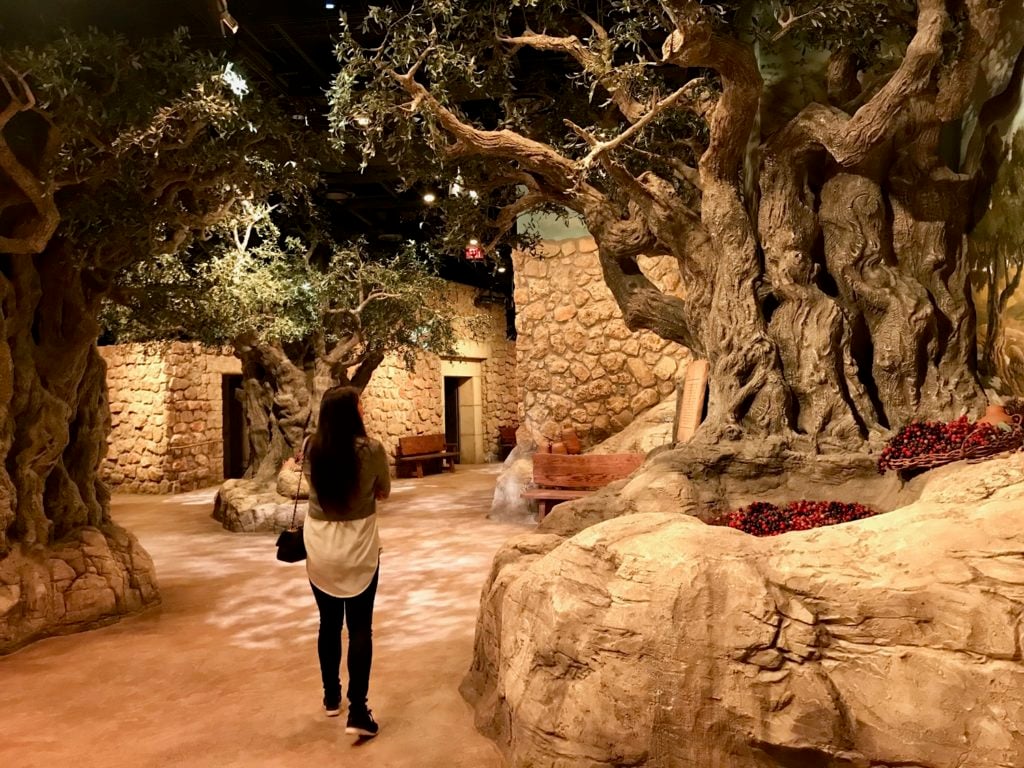
The Nazareth floor at DC’s Museum of the Bible. Photo: Manachem Wecker.
The scope and quality of the ancient and medieval manuscripts are indisputable. But readers beware: The books and fragments also require careful examination of the labels to discern the many copies and facsimiles from authentic artifacts.
There are the few quirky objects as well. A 17th-century King James “Wicked Bible,” for example, is so named for a typo in its Exodus 20:14, which forgets the “not” and reads, “Thou shalt commit adultery.” Most copies were destroyed or corrected, a label notes, but the museum owns “a rare uncorrected copy.” The copy is opened to the page, so viewers can experience the typo’s wickedness.

From left, the “Wicked Bible;” A Vatican library book; Bible with Martin Luther’s signature. Photo: Menachem Wecker.
The museum’s leadership has repeated time and again that the institution isn’t preaching or pushing any religious agenda, and that it welcomes all visitors, including atheists. Time, of course, will tell to what extent a diverse audience will visit and engage with the museum.
As one walks through the section on the Bible’s impact and notices models of Thomas Jefferson’s Bible and George Whitefield’s pulpit, one can’t help but think of the real objects on view down the street at the Smithsonian’s National Museum of American History.
What is the difference between seeing objects associated with the sacred in a secular museum, such as the Smithsonian, and at a museum with a religious label like this one?
Experts have debated this question of context long before the inauguration of the Museum of the Bible. Aaron Rosen, professor of religious studies at Rocky Mountain College and author of several books on religion and art, is wary of the idea of evangelicals needing a “safe space” to engage with sacred objects.
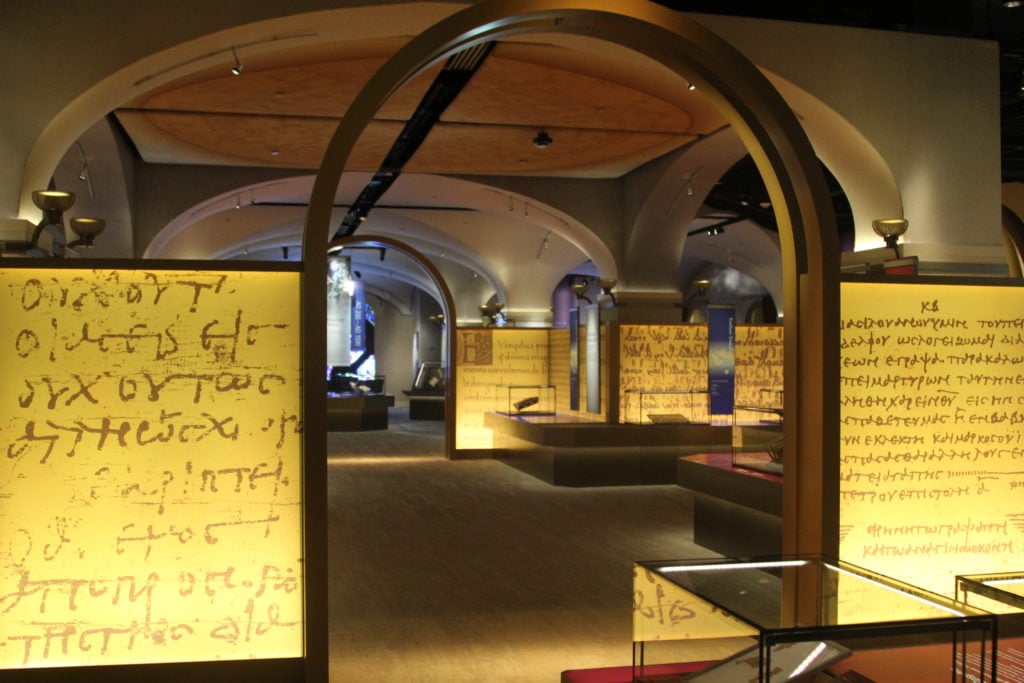
The History Floor at the Museum of the Bible. Photo: Menachem Wecker.
“If evangelical viewers recoil from ‘secular’ museums, I am not sure this is in itself a very good reason to create a new space for them to feel ‘at home,’” Rosen says. It runs the risk of feeding the “dubious but vociferous narrative” among the right wing that they are “somehow under seige,” he notes. “A great deal of good can come from being uncomfortable, from having one’s beliefs and interpretive strategies challenged.”
S. Brent Plate, a religious studies professor at Hamilton College, recalls touring museums where visitors have felt drawn to kiss and to touch sacred objects. That’s not allowed at the Museum of the Bible, with the exception of a stone from the walls Herod built around Jerusalem’s Temple Mount in the first century B.C.E. (That display was organized by Israel’s Antiques Authority.)
Whether the museum admits it or not, it’s a very Protestant institution, which means no such adoration of relics—but plenty of affection for the Bible. “Protestants famously got rid of icons and images in general, but their reverence for the Bible comes quite close at times to similar devotion,” Plate says.
Richard Townsend, the former director of the shuttered Museum of Biblical Art in Manhattan, dealt daily with the question of what role the museum ought to play in the city’s cultural life.
“Our first and foremost function was… to help audiences better understand the profound impact that the Bible has had on Western culture through the visual arts,” he says. “That wasn’t a matter of religious practice to us as an independent, secular institution, but a cultural and historical examination.” At the same time, Townsend says, the staff realized its work was resonating with people of faith.
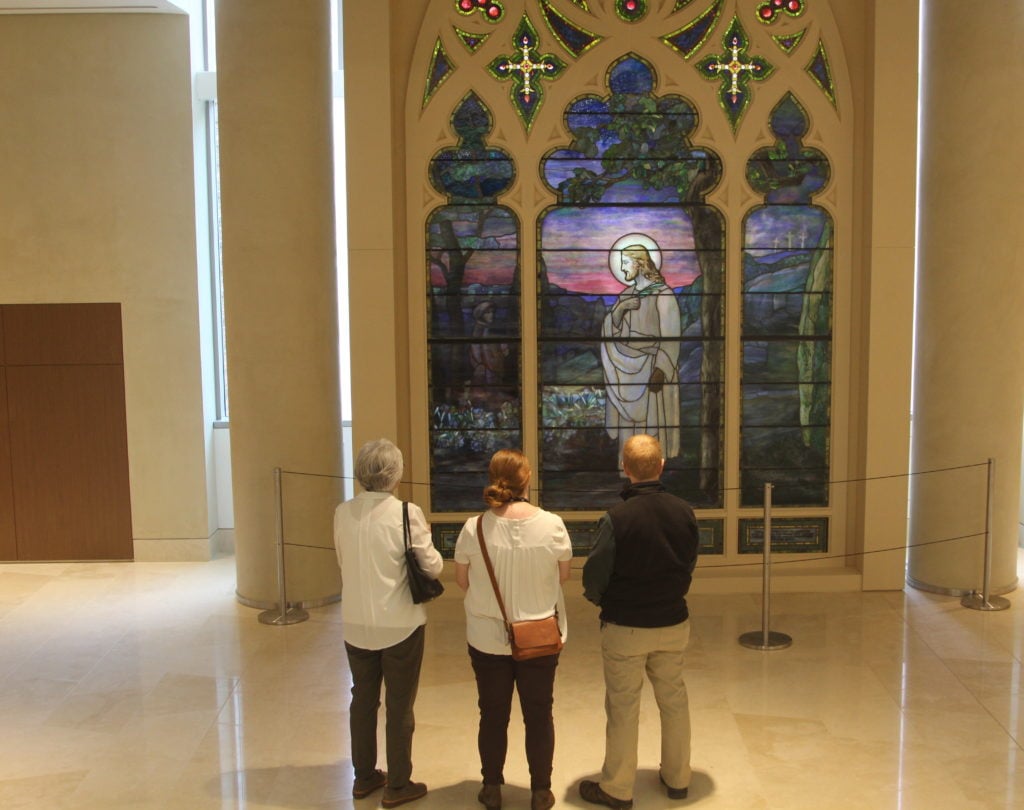
A stained glass display at the Museum of the Bible. Photo: Menachem Wecker.
Townsend thinks the Museum of the Bible can learn from his former employer. “For it to be successful, it mustn’t have a dog in the fight,” he says. If it is not perceived as having an agenda and operates according to best museum practices, he adds, “it can fill an important niche in the American museum world in illuminating a critical part of our past and the traditions that continue to shape us to this day.”
Karen York, director of the Museum of the Bible’s curatorial department, sees the institution as a different, more flexible kind of space for believers.
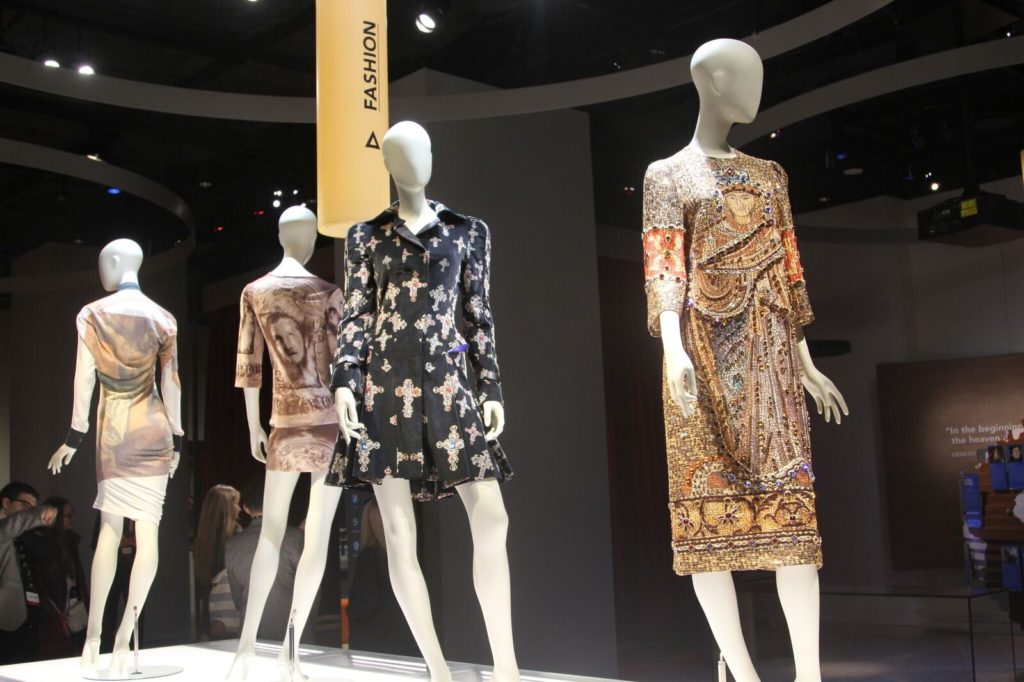
The intersection of religion and fashion on display. Photo: Menachem Wecker.
“This feels like a space where our visitors can express their own connection to the Bible in the way that they connect to it, in whatever branch or denomination of religion they practice in,” says York, the former collections and exhibitions director at Tulsa’s Sherwin Miller Museum of Jewish Art. “I’d like it if people felt more free to speak… of the way that they feel when they see these objects. And people who are religious are going to want to express that religious connection, which I think is great.”
“If you’re at the Smithsonian,” she adds, “maybe you feel less welcome to express that connection.”